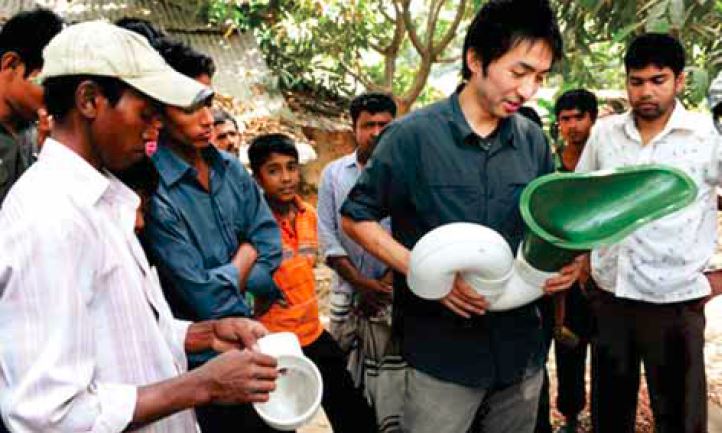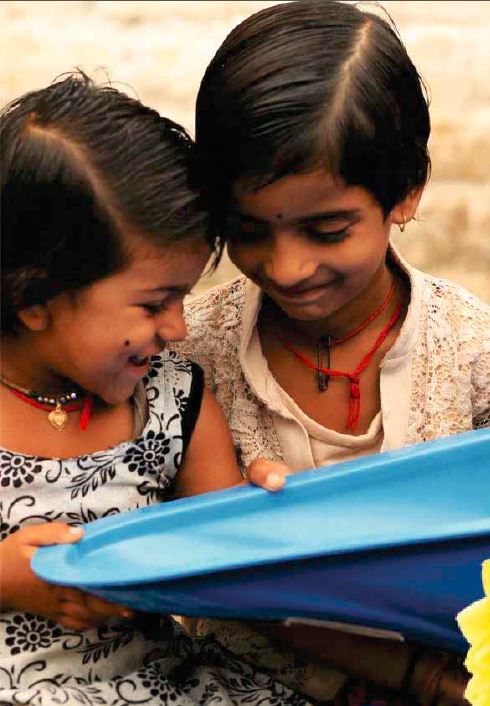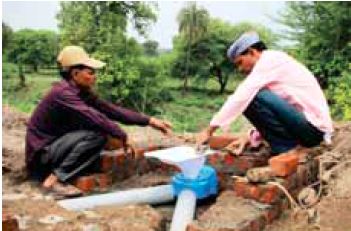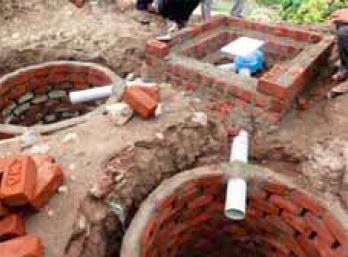Leveraging Technological Innovations to Improve Community Health Indicators


The impact of the sanitation crisis can be felt throughout the world, crippling opportunities for growth and development. According to the WHO, 2.1 billion people lack access to safe drinking water, 4.5 billion people lack access to safe sanitation services and 480,000 children under five die every year from diarrhoeal diseases. One of the foremost challenges India faces is its ability to provide access to safe sanitation. As per UNICEF India, around 564 million people (which is nearly half the population of India), defaecate in the open. There is an urgent need to transform the existing sanitation systems using innovative technological solutions. The progress in technological developments, new business models and policies will help us understand alternative sanitation solutions which can address various contexts such as low income availability, water scarcity, and non-sewered geographies.
Statistics showcase a grim reality posed by a lack of affordable and safe sanitation. In 2014, the Modi Government sought to rectify the situation by launching the world’s largest sanitation drive called the Swachh Bharat Mission (SBM). Through this flagship initiative, the Government expanded the coverage area of sanitation services across India, with an aim to make India 100 percent open defaecation free (ODF) by October 2019. The progress has been remarkable, and as a result, UNICEF estimates a family in an ODF (open defecation free) village in India can now save Rs.50,000 on account of avoided medical costs, time saving and value of life, annually. SBM has been in alignment with the United Nation’s SDG6 (Sustainable Development Goal 6), which aims to ‘ensure availability and sustainable management of water and sanitation for all’ by 2030.
With around 1/5 of the world’s population living in areas of water scarcity– often coinciding with areas that also suffer poor sanitation coverage– we need a technology that is appropriate for such deplorable circumstances. Therefore, there is an opportunity to develop sanitation solutions that meet the specific needs of the underserved communities.
 Globally, we see sanitation systems evolve in different ways. Not all toilets are seated, flush toilets or pans. Toilets are being reinvented to be waterless, chemical-less, with a provision to recover waste or ‘toilet resource’, and are often not connected to centralised,sewer waste treatment systems. With the introduction of a low-cost and smart product (such as SATO), we at LIXIL, has addressed the barriers of affordability and quality. With a dedicated business unit, providing innovative technological solutions at the grassroots, our SATO products feature a carefully tailored technology that addresses some of the unique design challenges hindering sustainable use of toilets in India. The range of products includes SATO Toilet Pans, SATO Toilet Stools, SATO Connection Systems, SATO Conventional Toilet Pans and SATO Toilet Systems.
Globally, we see sanitation systems evolve in different ways. Not all toilets are seated, flush toilets or pans. Toilets are being reinvented to be waterless, chemical-less, with a provision to recover waste or ‘toilet resource’, and are often not connected to centralised,sewer waste treatment systems. With the introduction of a low-cost and smart product (such as SATO), we at LIXIL, has addressed the barriers of affordability and quality. With a dedicated business unit, providing innovative technological solutions at the grassroots, our SATO products feature a carefully tailored technology that addresses some of the unique design challenges hindering sustainable use of toilets in India. The range of products includes SATO Toilet Pans, SATO Toilet Stools, SATO Connection Systems, SATO Conventional Toilet Pans and SATO Toilet Systems.
With the introduction of a low-cost and smart range of products under the SATO brand, we have been a first mover in the off-grid sanitation space among multi-national corporations and have taken down the barriers of affordability and quality. With a dedicated business unit, providing innovative technological solutions at the grassroots, SATO products, that feature a carefully tailored design, address some of the unique design challenges hindering sustainable use of toilets in India.
All our SATO products come with low water-consumption features that require 80 percent less water per flush as compared to conventional P-Trap toilets. After each use, users pour inless than one litre of water to flush away waste, after which an airtight, counter-weighted trap door quickly seals to block away smell and passage of disease-carrying insects, to make fora safe and pleasant toilet experience. SATO has designed each product to suit the needs and preferences of users in different regions.
“In the coming years, there will be a dire need to develop user-friendly products, with advanced technological innovations, and to revamp existing designs for the rural and urban communities. These innovations will need to have a user-friendly interface, designed to address the specific market and environmental needs”
 Since our products have been designed keeping user preferences in mind, they are affordable, safe for children, easy to clean and install. Furthermore, one of the new generations of SATO products uses an innovative V-trap system connecting twin pits in a V configuration. This design makes switching between the two pits as simple as a flick of a stick and eliminates clogging.
Since our products have been designed keeping user preferences in mind, they are affordable, safe for children, easy to clean and install. Furthermore, one of the new generations of SATO products uses an innovative V-trap system connecting twin pits in a V configuration. This design makes switching between the two pits as simple as a flick of a stick and eliminates clogging.
In order to address the behavioural change aspects, we are experimenting with multiple community engagement activities like the training of women masons, collaborating with community leaders, among others. In March this year, in partnership with Samarthan, a leading non-profit organisation (NGO), we organised as kill-enhancement training workshop for 150 women masons in Ashta village of Sehore district in Bhopal, Madhya Pradesh. Such activities are aimed at increasing the demand for toilets and creating a community that understands the correct process of installation of toilets so that technical failures do not result in creating mistrust among people.
The Dr. Mashelkar Committee on Sanitation, instituted by the Government of India, recommended our innovative technology as a water-saving technology. Hence, we have been recognised as a harbinger of change in the field of Indian rural sanitation. In fact, the designs of SATO solutions are so effective and earth and-life-saving, they have been recognised by the global design community at the highest standards, recently being awarded Good Design Award 2018, and Red Dot Award 2018: Honourable Mention for SATO 923W model. These add to the long list of design awards we have received since the inception of the programme in 2012.

In the coming years, there will be a dire need to develop user-friendly products, with advanced technological innovations, and to revamp existing designs for the rural and urban communities. These innovations will need to have a user-friendly interface, designed to address the specific market and environmental needs. The crisis of lack of universal access to sanitation is a complex issue and can only be tackled with all sectors of the society working together to drive positive change. Recognising the magnitude of this challenge and its effect on people’s lives, we at LIXIL aim to improve access to sanitation and hygiene for 100 million people by 2020 through our innovative product lines, leading to improved community health outcomes.
Daigo Ishiyama is Director of Marketing and Technology for the SATO business unit at LIXIL. Based in New Jersey, USA, he brings the latest knowledge and thinking regarding toilet systems, product development and manufacturing techniques to innovate effective, affordable, aspirational products for the SATO business, which aims to address the sanitation needs of BoP population around the world.

